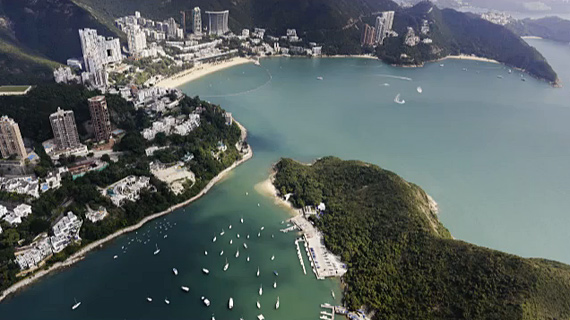Planning an aerial photography session may require a bit more than just photography expertise. If anything, the whole logistics of setting the flyovers to get the best shots possible is, for itself, mind blowing. Each picture is directly influenced by the pilot you’re working with, so one of the very first things you may want to consider when planning an aerial shooting is communication — deeply and thoroughly plan and explain it, both before and during the photo shoot.
Here, Graham Uden takes us on a short trip to Hong Kong where he performed an aerial shooting for Southside Magazine. Take a look as he roughly describes this photographic adventure:
Key Points to Keep in Mind
- Make sure you don’t shoot through glass, as it may be appropriate to remove the helicopter’s windows. And also don’t use lens hoods, as the wind will certainly catch from the side of the hood, making it impossible to get a steady shot;
- Of course the lens choice is ultimately up to you, but it’s essential to have several DSRLs, one for each lens choice you’ve made – that way, you’ll avoid having to change the lenses, which lessens the risk of dropping them on the helicopter;
- Be sure to establish a clear and concise communication with your pilot. A set of appropriate devices (headphones+mic) should always be used, as it also allows to hear air traffic controls, in case of flight restrictions — you’re only allowed to shoot populated areas above 1000ft.
For this shooting, Graham Uden used four 35mm DSLR cameras and four lenses. His lens choices for aerial photography are 14-24mm, 24-70mm, 70-200mm, 200-400mm and finally a 400mm prime lens.
And look how wonderful it can turn out to be…
Like This Article?
Don't Miss The Next One!
Join over 100,000 photographers of all experience levels who receive our free photography tips and articles to stay current:








Drones seem to be the new thing now a days, and I am starting to get in on the action with aerial photography. I have never done this before, and I am looking for any advice on how to make this a success. I like how you pointed out that I want to make sure not to use lens hoods so that the wind won’t make it impossible to get a steady shot. This is something that I haven’t even thought about, but since you pointed it out, it makes perfect sense.
Thanks for the great tips to capture the best aerial photography shots. I need someone to do this for me, so it’s good to know what to ask about. I’ll be sure to make sure the photographer isn’t shooting through the windows or anything like that.
Nice little article! We do aerial photography a little bit differently using radio-controlled UAVs. UAV photography has come on a long way in the last few years and our octocopter can carry a full size DSLR. We are not allowed to go above 400 feet so our aerial photos are much more up close and personal, but we can obtain some great photos and video. If you think framing a shot out of a helicopter window is fun… try it when your camera is 200 feet above your head :)